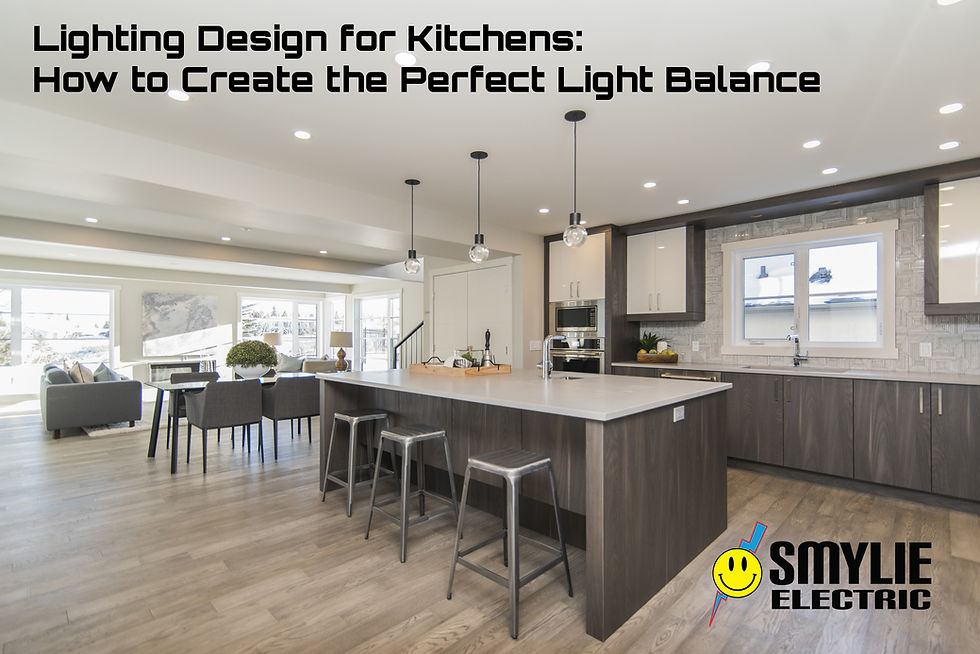Lighting Design for Kitchens: How to Create the Perfect Light Balance
- Casey Krasner
- Jan 13, 2023
- 2 min read

The kitchen is one of the most important rooms in your home, and proper lighting is essential for both functionality and aesthetics. Good lighting can make a big difference in how you use your kitchen and can even affect your mood. In this blog post, we will go over the different types of lighting and how to use them to create the perfect illumination for your kitchen.
Task Lighting
Task lighting is the most important type of lighting in the kitchen. It is used to illuminate specific areas where you perform tasks such as cooking, food preparation, and cleaning. The best way to achieve task lighting is by using a combination of under-cabinet and pendant lights. Under-cabinet lights provide task lighting for countertops and can be installed under the cabinets. Pendant lights can be hung above the kitchen island or sink to provide task lighting in those areas.
Ambient Lighting
Ambient lighting is used to create a general, overall light in the kitchen. This can be achieved through the use of recessed lighting or ceiling-mounted fixtures. Recessed lighting is a great option for kitchens with lower ceilings as it doesn't take up any space. Ceiling-mounted fixtures can be used to provide ambient lighting while also adding a decorative touch to the kitchen.
Accent Lighting
Accent lighting is used to highlight specific areas or objects in the kitchen. This can be achieved through the use of track lighting, spotlights, or under-cabinet lights. Track lighting can be used to highlight artwork or a backsplash. Spotlights can be used to highlight a specific area of the kitchen such as a display cabinet. Under-cabinet lights can also be used as accent lighting to highlight the backsplash or countertops.
Natural Light
Natural light is one of the most important types of lighting in the kitchen. It can be used to create a warm and inviting atmosphere while also saving energy. The best way to bring natural light into the kitchen is by using large windows or skylights. If you don't have many windows in your kitchen, you can also use a solar tube or a light well to bring natural light into the room.
In conclusion, proper lighting is essential for both functionality and aesthetics in the kitchen. By using a combination of task lighting, ambient lighting, accent lighting, and natural light, you can create the perfect illumination for your kitchen. Remember to use dimmable lights and control the lighting with a switch or a dimmer to adjust the light level according to the time of day, the activity and the mood you want to create in your kitchen.



Step into a world of graceful illumination with our refined collection of Japanese paper lamps, where heritage craftsmanship merges effortlessly with modern aesthetics. Inspired by the timeless design language of Noguchi, each Akari lamp is carefully handcrafted to capture the spirit of Japanese minimalism and beauty. Constructed from traditional washi paper, these lamps emit a soft, ambient glow that enhances any space with calm and charm. Both functional and decorative, they add a touch of sophistication and peaceful elegance to your home. Follow the link: https://hugacollective.com/collections/akari-lamps